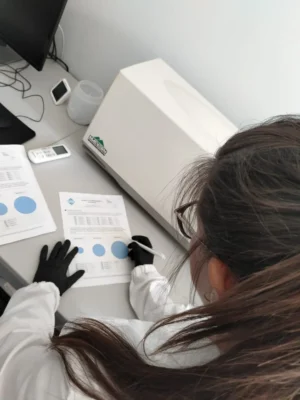Egagropiles: an intriguing treasure from the sea 🪸🌊
🔬 Two weeks ago, sampling of egagropiles (known as “sea meatballs”) was completed to analyze the presence of microplastics within them. Seawater samples were also taken to assess pH, salinity, and temperature.
🔍 Did you know? Egagropiles arise from the leaf residues and roots of Posidonia oceanica, which, due to wave movement and sea currents, aggregate to form oval or almost spherical structures (Treccani). Hence the common name: sea meatballs! 🌊
🌿 This sampling and analysis work is part of the first phase of the T.A.L.A.M.O.N.E. project, which aims to assess the health of local Posidonia meadows, their ecosystem and ecological services, and their vulnerability to climate change.
💚 Follow us to discover the research results and the state of well-being of this true “green lung of the Mediterranean”! To find more about the project visit TALAMONE project page


